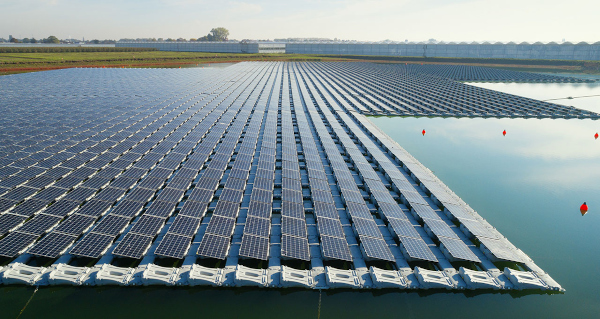HYDERABAD: In the backdrop of Indian government’s plan set to launch deep ocean mission in 2022, researchers from Birla Institute of Technology (BITS), Pilani (Hyderabad campus) have found that submerged solar cells could be potentially used in monitoring sensors and for other commercial and defence applications such as submarines and marine investigations.
As part of a funded-project by the Defence Materials and Stores Research and Development Establishment (DMSRDE), Defence Research and Development Organisation (DRDO), researchers at BITS, Pilani, Hyderabad along with those from Indian Institute of Technology, Kanpur, studied ‘underwater characterisation and monitoring of silicon solar cells in diverse water settings’.
“Essentially, sufficient solar energy is available underwater that is enough to run self-powered submarine equipment. The purpose of the study was to develop some capabilities and data repository from various kinds of solar cells for its usage underwater,” said Sudha Radhika, assistant professor, department of electrical and electronics engineering, BITS, Hyderabad.
For this, the researchers tested different solar cells coated with polydimethylsiloxane (PDMS) — a material that is highly transparent, possesses high light absorption properties and is hydrophobic — underwater.
“When the solar cell comes in contact with water, it will short circuit as water is conductive making the optimum encapsulation crucial,” said Sanket Goel, principal investigator and professor, department of electrical and electronics engineering, BITS, Hyderabad. “Such solar cells, covered with PDMS, will convert solar energy into electrical energy, which in turn will help power submerged sensors and other marine equipment.”
“Our study found that the power output of solar cells underwater was 70% of that on the surface, and extensive work is going on to enhance it further.”
He said that other interesting aspects in submerged conditions, like self-cleaning and natural cooling, help in achieving more power density from underwater solar.
The researchers, including Prasanth Kumar, a PhD scholar, developed a test-bed within the BITS, Hyderabad campus where they designed and fabricated an underwater environment wherein they prepared artificial seawater and conducted the characterisation using a solar simulator. They tested the cells submerged in four water environments — de-ionized water, lake water, real seawater and artificial seawater prepared with commercially bought sea salt and other water impurities.
Based on the study, it was observed that solar cells have a huge potential to utilise the underwater solar energy into electrical energy, which could power many sensors and other systems used in an underwater environment for commercial and defence applications.
“Even though there are challenges and constraints, the obtained results manifest huge potential for solar PV technology underwater for commercial and defence applications with modern electronics. These results further encourage us to explore more by considering other influencing parameters like turbulence, temperature, and also other impurities,” read a research paper, which was recently published in International Journal of Energy Research.
The group is now working towards employing other solar cells and performing on-field studies to deploy such capabilities in real applications.
Source: ToI
You may also like
-
IAF Aircraft Set Course For Exercise Eastern Bridge VII At Oman
-
IAF Set To Host The Indian Defence Aviation Exposition-II At Jodhpur
-
Defence Secretary to co-chair 5th India-Philippines Joint Defence Cooperation Committee meeting in Manila
-
Simultaneous Launch Of ‘malpe And Mulki’, Fourth And Fifth Ships Of Asw Swc (Csl) Project
-
Aatmanirbharta in Defence: MoD signs Contract with HAL for 240 AL-31FP Aero Engines for Su-30MKI Aircraft
